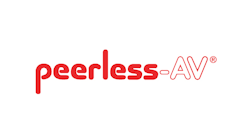Norwalk, Conn.
Chris Holmes
Vice President, Mobile Commerce Solutions, Payments and Public Sector
Xerox
Partnerships are one of the most critical cornerstones of any business endeavor. And in the case of Xerox’s Shop and Ride, a mobile application that seeks to bring offers from local merchants right to a transportation riders phone, partnership is no exception. Shop and Ride was created with a strong innovation component and the technical chops to bring the application to life. However, to make it a reality, it needed a deep understanding of the community it chose to launch in - Hoboken, New Jersey. Hoboken was chosen based on its manageable size, combined with a dynamic and rising population that live in Hoboken and work in Manhattan. Given that Shop and Ride was about merchants’ offers, the Xerox team sought out a partner that understood the area, its merchants and ultimately transportation rider clientele, and in that effort they found AR James.
An advertising company that has spent almost 20 years creating ads for bus shelters, also known as street furniture, AR James shared data from the ads they have installed throughout Hudson River region to help local merchants find customers. Their challenge was figuring out how to engage riders in a world where most people spend their time looking at their phone screen. It was a perfect partnership. Together the two organizations worked to create a product and launch campaign that combined technology and local know-how to launch a mobile app that would engage transit riders and those walking about town.
The result of the endeavor was a mobile application that showcases merchants in and around transit hubs where AR James has street furniture and train stations. Xerox installed beacons in each of the bus shelters, which could push notifications of local merchants’ offers to individual mobile phones as commuters walk about town, making the offers hyper-local. The merchants signed on to have their offers included in the mobile application based on their trust of AR James, the Xerox name and the improved advertising metrics the application offered. To further boost the application’s adoption, AR James put life-size advertising on the local bus shelters promoting Shop and Ride. Beacons were also installed in each merchant location so when the users redeemed their offer it could be counted. This further extended the ability for AR James and merchants to understand conversion metrics.
The goal is to extend the program, building on Xerox’s relationship with its transit organization customers, as is the case with New Jersey Transit and other cities, across the nation. If Shop and Ride functionality is wrapped into mobile ticketing or parking applications, then people traveling would receive hyper-local and personalized offers as they travel. Regardless of the locale, the success of the Shop and Ride functionality comes down to partnership. As a technology innovation provider Xerox understands well that it cannot be all things to all people, but with partnerships with companies like AR James, who understand the people and businesses of the area, they can create and provide an offering that could change how people live their lives in transit.
Corona, Calif.
Patrick Merrick
Executive Vice President
Tolar Manufacturing Company Inc.
Being creative in order to provide the best possible transit riding experience for passengers is critical. That creativity often includes finding the “yes” when the budget says, “no.”
For instance, all too often transit providers hear from their passengers waiting for the bus at a stop that has nothing more than a pole. It is uncomfortable, and creates a perception of vulnerability, especially in extreme weather conditions. This ultimately creates a deterrent for many from using public transportation.
The challenge always goes back to budget. Transit providers are normally able to find capital for transit shelters, but are challenged to find operating dollars to maintain them. How can transit shelters and street furniture be provided at the majority of bus stops within a community for the comfort, security and convenience of passengers, while also developing an amenity solution that reflects the true character of their community? Enter revenue-generating advertising partnerships paired with quality-built, custom-branded shelters and street furniture. Over the years, these programs have transitioned and taken on different forms.
Some cities and agencies go out to bid for a complete turnkey program where an outdoor advertising company, often known as OOH or ‘Out Of Home’ advertising, which provides the capital shelter equipment, sells the advertising space and maintains the stop. Now we are seeing a hybrid of that solution with the awarded OOH selling advertising space on agency or city-owned shelters with the transit provider getting a larger share of the revenue as the owner of the capital equipment. With a larger share of revenue comes the opportunity to increase the maintenance budget for shelters or provide even more shelters across the system.
Jacksonville Transportation Authority (JTA) in Florida understands how to leverage their capital assets for revenue generation that ultimately benefits their passengers. Not only does JTA allow revenue-generating advertising on their buses, they also have creative programs in place for shelter advertisements, and directed commuter audio advertising.
Importantly, JTA is clear that any of their revenue-generating advertising efforts must be in the best interest of public transportation, stating in their advertising rules that JTA seeks to provide its citizens with public transportation that is delivered in a “safe, reliable and efficient manner without losing sight of the fact that as an independent agency of the State of Florida it must be a good steward of public money.”
Bus stops and their corresponding amenities have come a long way from their predecessors. By creative revenue sharing communities working closely with shelter designers and manufacturers, they can now offer their citizens many options. For instance at Tolar Manufacturing Company, now in its 25th year, through the use of electricity to provide lighting for a shelter, whether solar or connected, that electricity can also be used to power digital displays, which provide important passenger route information. These displays can also integrate with the data to provide contextually relevant ads, news and information. In larger cities with transit corridors those digital displays can even be dynamically synchronized to provide a truly eye-catching and engaging experience. As North America’s leader in the design and fabrication of award-winning transit shelters and street furniture, Tolar Manufacturing feels strongly that revenue-generating advertising balanced with distinctively branded transit shelters can create a true “sense of place” to benefit public transportation and the communities it serves.
Aurora, Illin.
Nick Belcore
Executive Vice President of Global Sales and Marketing
Peerless-AV
The hardware we are providing transit companies gives them the vehicle to create revenue generating opportunities themselves via high power graphic advertising. As opposed to their previous use of static signage, transit companies are now able to appeal to a variety of different advertisers through digital signage.
Digital signage provides transit companies and their advertisers with enhanced opportunities to truly engage with riders. Plus, they now have the ability to easily update any content, both indoors and outdoors, expanding their audience base. At Peerless-AV, we work hard to stay on top of the trends to provide the top quality hardware that transit companies are looking for.
San Francisco, Calif.
Stephen B. Smith
Sales Director, East
RideCell
The transit business is in the throes of an identity crisis. Innovations in new mobility services, growing urban populations, and shifting demographics all point to exciting opportunities to rethink the very definition of public transportation.
Let’s face it: Most U.S. cities are working with a legacy transportation infrastructure, consisting of some mix of bus, light rail, train, and taxi services. More recently, new mobility services — such as carsharing, ridesharing and bike sharing — have entered the scene. But the availability of new transit options has only served to cause further fragmentation in city transit systems (not to mention consumer confusion).
How can a consumer hope to connect the pieces of the puzzle? Consider the challenge of plotting a route from an outlying residential neighborhood (Point A) to a school or job in another corner of the city (Point B). There may be an excellent bus line somewhere in between, but the distances from Point A and to Point B render it practically useless. This is the proverbial first- and last-mile challenge.
RideCell is on a mission to connect those points. Backed by RideCell, transit agencies can launch new services that meet the transportation needs of each geography and population. The company’s fully integrated solution automates the entire ride, from rider request to dispatch, scheduling, transfers between cities, routing, and notifications. This end-to-end automation has translated into operational efficiencies and cost savings for transit agencies and has allowed them to scale rapidly to service more riders with limited infrastructure investment. At the same time, they’ve been able to increase ridership and to keep those riders satisfied.
A partnership with RideCell is just as unique as the RideCell platform. It starts with understanding customer goals and aligns contract terms with their successful achievement. Before any agreement is signed, the company’s Customer Success team holds a full-day Service Design Workshop, where both RideCell and prospect teams discuss, evaluate, and flesh out project goals, tactics, and timelines. What metrics can be applied to those goals? What kind of fee structure maps to meeting and exceeding those metrics?
For example, some transit agencies may be funded based on subsidies from another transit ride or based on ridership. RideCell can design a revenue model that’s tied to agreed-upon subsidy and ridership goals. In cases where the rider pays for the service outright, the revenue-sharing model can be more direct. And if a fixed fee aligns better with a customer’s business model, that’s an option too. RideCell’s business philosophy emphasizes this type of mutually beneficial relationship, as it encourages all parties to work openly to deliver an excellent transportation experience for every rider.
At RideCell, innovation isn’t limited to software and services. The company’s Customer Success team has deep expertise that can inform and guide the design of innovative transportation solutions. RideCell’s pricing structure is yet another feature of the company’s innovative approach — and one that can make all the difference as transit agencies embrace the challenges of new service delivery models.







